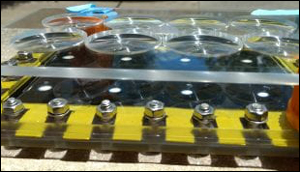‘Hot spots’ increase efficiency of solar desalination
19. 6. 2019 | Rice University | www.rice.edu
Researchers in Rice’s Laboratory for Nanophotonics (LANP) showed they could boost the efficiency of their solar-powered desalination system by more than 50% simply by adding inexpensive plastic lenses to concentrate sunlight into “hot spots.” The results are available online in the Proceedings of the National Academy of Sciences.
“The typical way to boost performance in solar-driven systems is to add solar concentrators and bring in more light,” said Pratiksha Dongare, a graduate student in applied physics at Rice’s Brown School of Engineering and co-lead author of the paper. “The big difference here is that we’re using the same amount of light. We’ve shown it’s possible to inexpensively redistribute that power and dramatically increase the rate of purified water production.”

Dongare and colleagues, including study co-lead author Alessandro Alabastri, coat the top layer of their membranes with low-cost, commercially available nanoparticles that are designed to convert more than 80% of sunlight energy into heat. The solar-driven nanoparticle heating reduces production costs, and Rice engineers are working to scale up the technology for applications in remote areas that have no access to electricity.
Read more at Rice University
Image Credit: Pratiksha Dongare
-jk-




